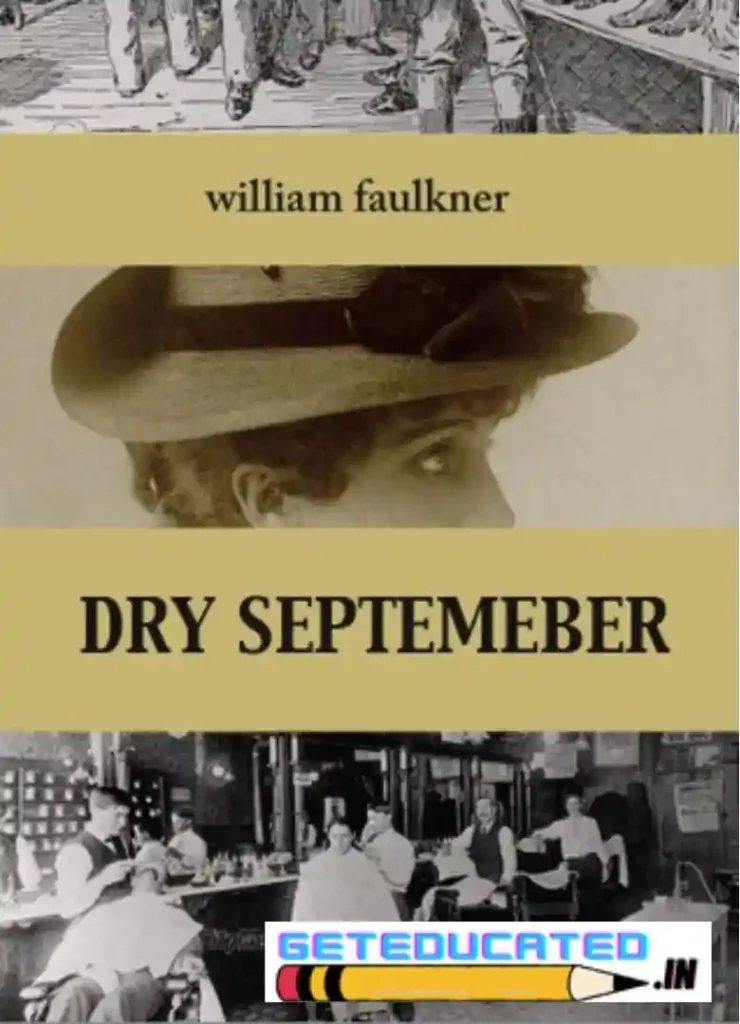
Q. What is the Significance of the Title Dry September?
The word, title originated from the Latin word, “Titulus”. It is defined as the head of the topic. The title should be brief, attractive, and catchy. It provides the outline of the topic. The title may be selected according to three categories — subject matter, the central character(eg, Macbeth), and satirical, eg, rape of the lock.
In William Faulkner’s short fiction “Dry September,” we are presented with a vision of small town Southern life during reconstruction. This story has it all: a crime of passion, racism, and violence. Faulkner has riddled this story with violence issues and shows us what kind of effect it can have on individuals and society. Small town life can be scary when everyone knows everyone else. Rumors run like water. The violent nature of man has a slippery slope affect in society. The violent actions of one man lead to the actions of another, and the ones this violence is used against are affected and will continue to affect others in society. In addition to these currents of brutality Faulkner includes other subjects like racism and the position of women in this society. Faulkner is showing us what is happening underneath all of the problems on the surface. … (Read More)
Q. Describe the Character of John McLendon Briefly.
John McLendon is a major character in the short story “Dry September”. He is a military veteran who “had commanded troops at the front in France and had been decorated for valor”. John McLendon has a “thick head” and a “heavy-set body”, but when he keeps his feet apart, he has an easy poise. He has a “furious, rigid face” and a “hot, bold glance”. McLendon is described as wearing a felt hat and a white shirt “open at the throat”. He carries a heavy automatic pistol in his hip pocket. … (Read More)
Q. Explain the Ending of the Story – Dry September.
“Dry September” closes with John McLendon’s returning to his “birdcage” home at midnight and brutally confronting his wife. Hearing his question, “Haven’t I told you about sitting up like this, waiting to see when I come in?” we wonder where and what he must have been doing the other times, and how often his wife must endure his abusive behavior. The sadism that was revealed in his slashing out at Will continues in his sadistic treatment of his wife when he “half struck, half flung her across the chair.” … (Read More)
Q. Examine the Theme and Narrative Structure of Dry September.
As a Southern writer, Faulkner draws upon the mores and prejudices of his own regional culture to create unforgettable characters and settings for his novels and short stories. “Dry September” clearly shows the horrible miscarriages of justice that prejudice can cause. Although the story revolves around the killing of Will Mayes, the actual act of killing is omitted in order to keep our attention focused on the causes of the violence, and on the mental and physical atmospheres that breed such senseless and random acts of cruelty. … (Read More)
Q. Explain Dry September as a Representative of American South.
Like many of William Faulkner’s stories, ‘Dry September’ focuses on town gossip and its relation to the individual. But unlike ‘A Rose for Emily’, which explores the ways in which rumour surrounds an unmarried aristocratic woman living in the American South, ‘Dry September’ takes an even darker theme for its subject: racial prejudice and the lynching of black people in the Deep South. … (Read More)
Q. Describe the Social and Political Condition of American South.
Like many of William Faulkner’s stories, ‘Dry September’ focuses on town gossip and its relation to the individual. But unlike ‘A Rose for Emily’, which explores the ways in which rumour surrounds an unmarried aristocratic woman living in the American South, ‘Dry September’ takes an even darker theme for its subject: racial prejudice and the lynching of black people in the Deep South. “Dry September” shows us a late 1920s or early 1930s Mississippi town breaking under the weight of its outmoded social and class structures. In the days of slavery, the landowner with the biggest plantation and the most slaves was considered to be at the top of the social and class structure. … (Read More)
